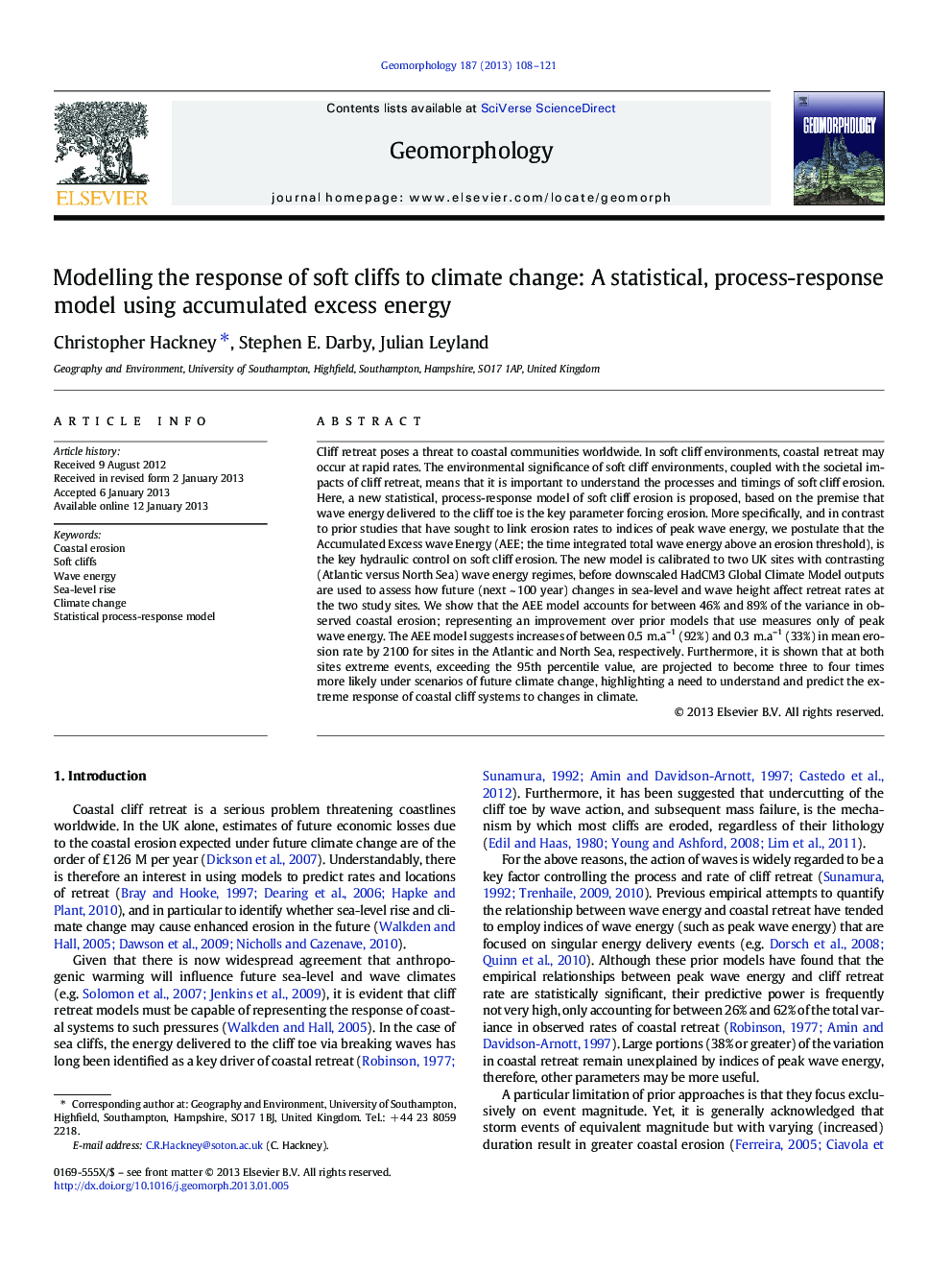| کد مقاله | کد نشریه | سال انتشار | مقاله انگلیسی | نسخه تمام متن |
|---|---|---|---|---|
| 6432844 | 1635462 | 2013 | 14 صفحه PDF | دانلود رایگان |
Cliff retreat poses a threat to coastal communities worldwide. In soft cliff environments, coastal retreat may occur at rapid rates. The environmental significance of soft cliff environments, coupled with the societal impacts of cliff retreat, means that it is important to understand the processes and timings of soft cliff erosion. Here, a new statistical, process-response model of soft cliff erosion is proposed, based on the premise that wave energy delivered to the cliff toe is the key parameter forcing erosion. More specifically, and in contrast to prior studies that have sought to link erosion rates to indices of peak wave energy, we postulate that the Accumulated Excess wave Energy (AEE; the time integrated total wave energy above an erosion threshold), is the key hydraulic control on soft cliff erosion. The new model is calibrated to two UK sites with contrasting (Atlantic versus North Sea) wave energy regimes, before downscaled HadCM3 Global Climate Model outputs are used to assess how future (next ~Â 100Â year) changes in sea-level and wave height affect retreat rates at the two study sites. We show that the AEE model accounts for between 46% and 89% of the variance in observed coastal erosion; representing an improvement over prior models that use measures only of peak wave energy. The AEE model suggests increases of between 0.5Â m.a-1 (92%) and 0.3Â m.a-1 (33%) in mean erosion rate by 2100 for sites in the Atlantic and North Sea, respectively. Furthermore, it is shown that at both sites extreme events, exceeding the 95th percentile value, are projected to become three to four times more likely under scenarios of future climate change, highlighting a need to understand and predict the extreme response of coastal cliff systems to changes in climate.
⺠A new statistical, process-response model of soft cliff erosion is proposed. ⺠Accumulated excess energy appears to represent up to 89% of variability in erosion. ⺠The effects of climate change were assessed using downscaled climate data. ⺠Increases in sea level and wave height will result in increased rates of erosion.
Journal: Geomorphology - Volume 187, 1 April 2013, Pages 108-121
